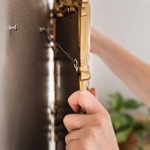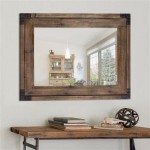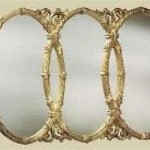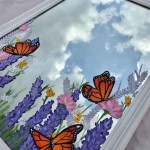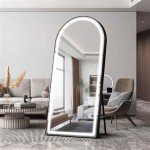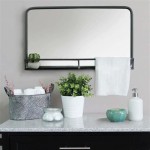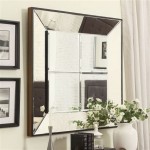Plate Glass Mirrors: Properties, Production, and Applications
Plate glass mirrors, ubiquitous in modern society, represent a sophisticated application of glass technology. Created by applying a reflective coating to a substrate of plate glass, these mirrors offer a combination of durability, reflectivity, and aesthetic appeal. Understanding their composition, manufacturing process, and diverse applications provides valuable insight into their significance in architectural design, scientific instruments, and everyday life.
The term "plate glass" refers to a specific type of glass manufactured through a historical process that involved casting molten glass onto a flat table, followed by grinding and polishing to achieve a perfectly smooth, distortion-free surface. While the original plate glass process is largely obsolete, the term remains associated with high-quality, flat glass used in mirror production. Modern mirror manufacturing utilizes float glass, a superior alternative that produces a smoother and more consistent surface, eliminating the need for extensive grinding and polishing.
The optical quality of the glass substrate is paramount in mirror manufacturing. Imperfections in the glass, such as bubbles, distortions, or variations in thickness, can negatively impact the reflected image, causing distortions and reducing the overall visual clarity. Therefore, manufacturers prioritize the use of high-grade float glass, carefully selected for its uniformity and lack of defects.
The Manufacturing Process of Plate Glass Mirrors
The creation of a plate glass mirror involves several distinct stages, each critical to the final product's quality and performance. The process typically begins with a sheet of float glass that is cleaned meticulously to remove any contaminants that could interfere with the adhesion of the reflective coating.
The most common reflective coating applied to plate glass mirrors is silver. Silver provides excellent reflectivity across the visible spectrum, resulting in a bright and accurate reflection. The silver layer is typically applied through a chemical deposition process. One such process, known as the "wet silvering," involves spraying a chemical solution containing silver ions onto the thoroughly cleaned glass surface. The silver ions are reduced, forming a thin, uniform layer of metallic silver that adheres to the glass.
The thin silver layer alone is vulnerable to oxidation and abrasion. To protect the reflective silver layer, manufacturers apply a protective layer of copper. The copper layer enhances the durability of the coating and prevents the silver from tarnishing or corroding over time. This copper layer is also typically applied through a chemical deposition process.
Finally, one or more layers of paint are applied to the back of the copper layer. These paint layers act as a further barrier against moisture, scratches, and other environmental factors that could damage the reflective coating. The paint is typically a lead-free formulation for safety and environmental considerations. The number and type of paint layers can vary depending on the intended application of the mirror.
After the paint has dried and cured, the mirror is inspected for any defects or imperfections. It is then cut to the desired size and shape, and the edges may be polished or beveled for aesthetic purposes and to reduce the risk of chipping or cracking.
Key Properties of Plate Glass Mirrors
Plate glass mirrors possess a unique combination of properties that make them suitable for a wide range of applications. Reflectivity, durability, and optical clarity are among the most important.
A primary attribute is its high reflectivity. The silver coating, protected by copper and paint layers, reflects a significant portion of the light that strikes the mirror's surface. The actual reflectivity can vary depending on the quality of the silvering process and the thickness of the silver layer. High-quality plate glass mirrors typically achieve reflectivity rates exceeding 90% across the visible spectrum.
Durability is another critical property. The glass substrate provides structural integrity, while the protective layers shield the reflective coating from damage. Plate glass mirrors are resistant to scratches, moisture, and chemical exposure, making them suitable for use in a variety of environments, including bathrooms and laboratories. However, they are still susceptible to breakage from strong impacts and should be handled with care.
Optical clarity is essential for accurate and undistorted reflections. The use of high-quality float glass ensures that the mirror surface is perfectly flat and free from imperfections. This minimizes distortions and provides a clear, sharp reflection. The thickness of the glass also contributes to optical clarity, with thicker glass generally providing a more stable and distortion-free surface.
Furthermore, plate glass mirrors can be manufactured in a variety of sizes and shapes, offering considerable design flexibility. They can be easily cut, drilled, and edged to meet specific requirements. This adaptability makes them suitable for both large-scale architectural projects and smaller decorative applications.
Diverse Applications of Plate Glass Mirrors
The versatility of plate glass mirrors has led to their widespread use in a multitude of applications, spanning architectural design, interior decoration, scientific instruments, and automotive engineering.
In architectural design, plate glass mirrors are used to create a sense of spaciousness, enhance natural light, and add visual interest to interior spaces. Large mirrors can make small rooms appear larger, while strategically placed mirrors can reflect light and brighten dark areas. They are frequently used in hallways, bathrooms, and closets to improve visibility and create a more welcoming atmosphere.
Mirrors are also integral to interior decoration. Decorative mirrors, available in a wide range of shapes, sizes, and styles, serve as accent pieces, adding elegance and sophistication to any room. They can be framed, unframed, beveled, or etched to create a unique and personalized look. The ability to customize plate glass mirrors makes them a popular choice for interior designers and homeowners alike.
Beyond aesthetics, plate glass mirrors play a crucial role in scientific instruments. Telescopes, microscopes, and other optical devices rely on high-precision mirrors to focus and direct light, enabling scientists to observe and analyze objects at various scales. The mirrors used in these instruments must be manufactured to extremely tight tolerances to ensure accurate and reliable results.
In the automotive industry, plate glass mirrors are essential for driver safety. Rearview mirrors and side mirrors provide drivers with a clear view of their surroundings, allowing them to safely navigate traffic. These mirrors are typically treated with special coatings to reduce glare and improve visibility in adverse weather conditions.
Furthermore, plate glass mirrors find applications in security systems, providing surveillance in retail stores, banks, and other public spaces. They are also used in training facilities, such as ballet studios and gyms, to allow individuals to monitor their movements and improve their technique.
The adaptability and practicality of plate glass mirrors continue to drive innovation and expansion in their applications. As technology advances, new and innovative uses for these versatile reflecting surfaces are continuously being discovered.

Mirrormate Frame Added To The Plate Glass Wall Mirror What A Transformation In This Master Bath Small Bathroom Makeover Mirrors Diy

Plate Glass Mirror 4 X In 5 Pk Klm Bio Scientific

Before After Bathroom Mirror Makeovers Wall Large Mirrors

How To Remove A Plate Glass Mirror Doctor

Frameless Polished Plate Glass Mirror 1 4 Thick 8287 American Specialties

Commercial Mirror S Enbrand Glass Madison Wi

Plate Glass Mirrors

Plate Glass Mirror With Rigging Hewi

Mirror Glass Silvered Back 1 3 9 Pk Klm Bio Scientific

Stainless Steel Chan Lok Frame Plate Glass Mirrors With Shelf Variable Sizes 0625 Series American Specialties

